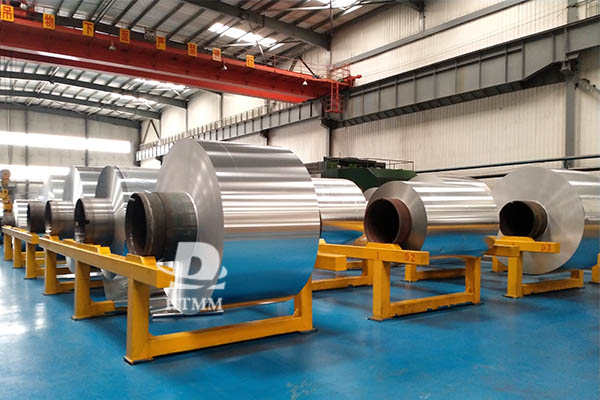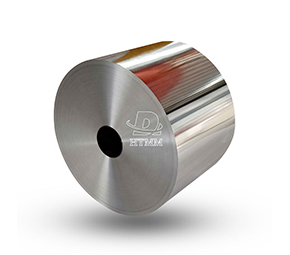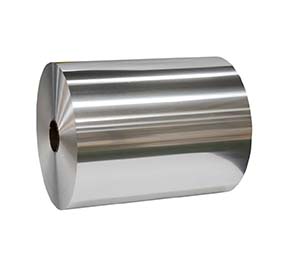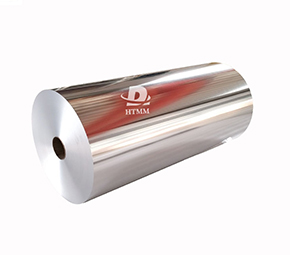These ingots are first sent to the melting furnace for a "bath", where they are turned into molten aluminum at temperatures in excess of 700°C. The process is similar to melting ice into water in winter, but at a much higher temperature. As the molten aluminum melts, workers add other metal components to create a mixture, much like adding different toppings to a cake, to control the final properties of the foil. Typical additions include iron and silicon, each in precisely calculated proportions.
The molten aluminum is then cast in a continuous casting machine, where it is formed into aluminum strips about 6-8 mm thick. While still hot, the strips are repeatedly rolled over several large sets of rollers, like dough being rolled with a rolling pin, to gradually thin. After hot rolling, the thickness of the aluminum strip is reduced to about 2-6 mm. The surface of the aluminum strip will be somewhat oxidized and rough, so it needs surface treatment. They are first pickled to remove the oxides, then rinsed with clean water.

The treated aluminum strip is then rolled into larger coils, called "hot-rolled coils." Each coil can weigh more than 10 tonnes, and its width depends on subsequent production requirements, widths in excess of one meter are common. These hot-rolled coils cannot be used directly as aluminum foil; You have to do cold rolling. Cold rolling involves further rolling at room temperature to further thin the aluminum strip. After multiple cold rolling steps, the thickness of the aluminum strip is reduced to about 0.3-0.5 mm, making it very thin with a much smoother surface.
II. Aluminum foil rough rolling: Conversion from thick to thin
When the aluminum coils are 0.3-0.5mm thick, the actual foil rolling can begin. This stage, known as "rough rolling," involves rolling the relatively thick aluminum strip onto thin foil. What does 20 micron thick aluminum foil mean? It’s about the thickness of three strands of human hair stacked together—very thin.
The rough aluminium foil jumbo rolls rolling process is usually carried out in specialized aluminum foil rolling mills. The mill is very precise, consisting of two large rollers through which the aluminum strip passes to be thinned. Rolling oil is added during rolling, both for lubrication and to prevent the foil from overheating. The rollers exert pressures of up to several hundred tons during rolling, yet the accuracy of the control must be extremely high, with errors of less than a few microns.
Rough rolling is usually done in multiple passes; It is not possible to reduce the foil to a thickness of 20 microns aluminium foil jumbo rolls in one go, as this would cause the foil to crack. For example, the foil can be rolled first to 100 microns, then to 50 microns, then to 30 microns, and finally to 20 microns. The thickness of the foil is reduced by about half with each pass. During this process, the speed of the rolling mill increases gradually, from tens of meters per minute initially to hundreds of meters per minute at the end.
The aluminum foil gets hot during the rolling process, which requires a special cooling system to control the temperature. At the same time, the thickness of the aluminum foil must be constantly monitored. Modern rolling mills have automatic thickness gauges that monitor and automatically adjust the rolling pressure in real time to ensure uniform thickness. If a thickness discrepancy is detected, the computer immediately adjusts the roll gap.
After rough rolling, the aluminium foil jumbo rolls is about aluminum foil 20 micron thick. However, the surface is still not smooth enough, and the edges may be uneven, which may require further processing. Furthermore, such thin aluminum foil is very brittle on its own, so two layers are usually stacked and rolled together before finally being separated. This is more efficient and protects the foil surface.
Third, the intermediate and final rolling of aluminum foil: the pursuit of ultimate thinness and smoothness
Although aluminum foil reaches the required thickness after rough rolling, it requires intermediate and final rolling to further improve its quality. Intermediate rolling can be considered a transitional phase, the main goal of which is to further uniformize the thickness of the foil and start to improve its surface quality. Finishing Rolling is the final finishing step, which determines the final surface condition and workability of the foil.
The rolling mill used in the intermediate rolling process is similar to that used for rough rolling, but with more precise process parameters.
Quality control is paramount during the production of large rolls of aluminum foil 20 micron. After all, even the slightest mistake in such a thin material can affect the final product. Modern aluminum foil plants have a comprehensive inspection system that monitors the entire process from raw materials to finished products.
First, component analysis is performed to ensure that the purity of each batch of aluminum at the raw material stage meets the standards. During the melting process, samples are repeatedly collected and tested, just as a chef is constantly tasting his food. The automatic thickness gauge works 24/7 during the rolling process. Using X-ray or laser technology, they measure with an accuracy of 0.1 microns, much finer than a human hair. This information is transmitted to the control center in real time. If a malfunction is detected, the system will immediately trigger an alarm and adjust automatically.
Surface quality inspection is also very important. High-speed cameras capture every inch of the aluminum foil surface, detecting scratches, dents and oil stains. Some high-end production lines are also equipped with eddy current detectors to detect internal defects that are not visible to the naked eye. The mechanical properties testing is done by sampling, measuring the tensile strength, elongation and other indicators of the foil to ensure that the customer requirements are met.
In addition to these high-tech methods, the experience of experienced artisans is also crucial. They take samples regularly, use their hands to determine the softness of the foil, visually observe the surface gloss, and even hear the sound of the foil rubbing against its surface to help determine quality. This "man-machine integration" test method ensures the integrity of the aluminum foil leaving the factory.
VII. Environmental Protection Measures and Future Development in Aluminum Foil Production
As environmental protection requirements become increasingly stringent, modern aluminum foil production lines are also making significant efforts to address this issue. First, exhaust gas treatment is very important. Both the melting furnace and the annealing furnace are equipped with advanced dust removal and desulfurization equipment, ensuring emissions well below national standards. Oil mist generated during the rolling process is also collected and treated by dedicated collection systems, preventing it from being released directly into the atmosphere.

Wastewater treatment is equally rigorous. Acidic, alkaline and oily wastewater generated during production goes through multiple treatment steps to meet reuse standards before being recycled. Any wastewater that cannot be used is also treated to meet standards before disposal. Scrap aluminum chips and scraps are 100% recycled and remelted into aluminum ingots, enabling closed-loop resource utilization.
In terms of energy consumption, new production lines use technologies such as waste heat recovery, high-efficiency motors, and intelligent temperature control to reduce energy consumption per unit product by more than 40% compared to ten years ago. Some factories are installing rooftop solar panels to further reduce carbon emissions. Future aluminum foil production will strive towards "zero emissions" goals, for example by experimenting with using hydrogen instead of natural gas to melt aluminum ingots and developing more environmentally friendly rolling oils.
Product innovation is also a key area. For example, thinner aluminum foil (15 or even 10 microns) can be developed to reduce material consumption while maintaining functionality, or coated aluminum foil with special features to meet the needs of emerging industries such as new energy and electronics. Intelligent manufacturing will also be further developed using big data and artificial intelligence to achieve more precise quality control by optimizing process parameters. It is foreseen to revitalize the traditional aluminum foil industry through innovation.





